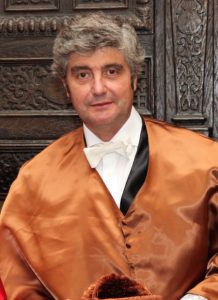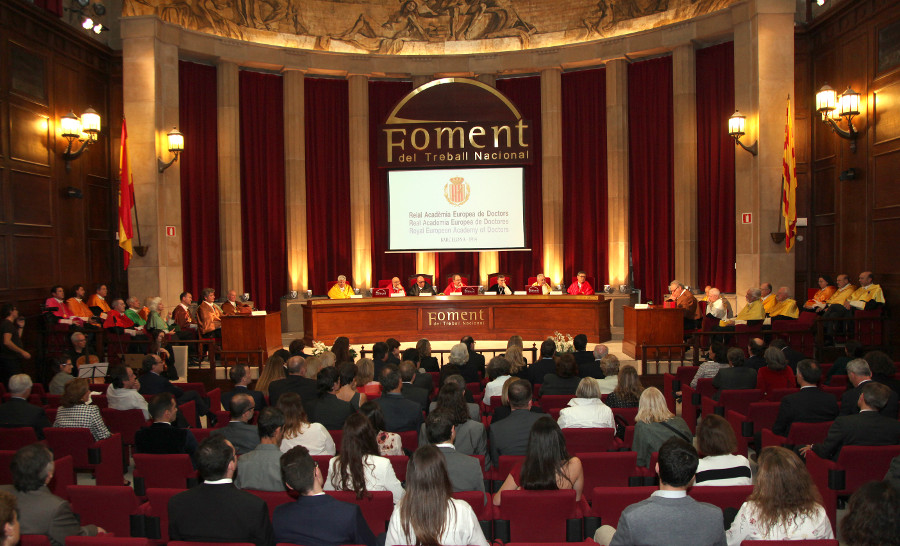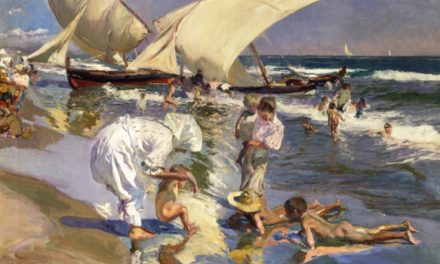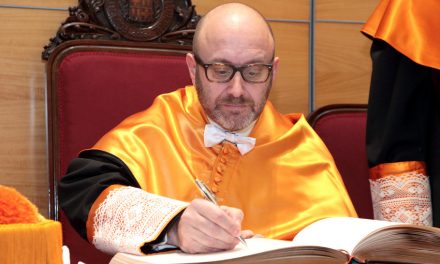“The Rambla emerges as a spontaneous space, sedimented by the time. The Cerdà Plan crystallizes despite the reluctance of a part of the population, and with the Olympic Villa, the infrastructures for the recovery of the coastline are undergone, a historical pending action”
Three spaces that define the current Barcelona and whose engagement in the city, beyond its functionality, lies in its perfect response to urban, social, economic, political, cultural and even environmental conditions at the time of its development. The renowned architect Juan Trias de Bes analyzes in his speech as member of the Royal Academy of European Doctors-Barcelona 1914 (RAED), which was celebrated in Barcelona on October 26, the success of three urban projects that today suppose an emblem for the Catalan capital: the Rambla, the Eixample and the Olympic Village. The speech is entitled “Barcelona, galería urbana” (Barcelona, urban gallery) and had the answer, on behalf of the RAED, of the full academician Jaime Rodrigo de Larrucea.

Dr. Juan Trias de Bes
Built in the seventeenth century from the expansion of the city and the construction of new walls, the new academician believes that the urban development of the Rambla is due to the fact that it assumes the role of a new central axis. “The success of the Ramblas is undoubtedly a space of new centrality. This quality is essential, depriving itself of the daily pressure of commercial activities. Its original suburban character left it as a place waiting for the optimum circumstances of occupation, and this condition was modernity. The Rambla is the scene of social and cultural progress, and with them, that of public identity. Its development and configuration does not arise because of the political determination, but because of the socio-economic impulse of the city itself”, he argues.
In the Eixample, despite being imposed by the Government of Madrid on the project that won the public tender in Barcelona to expand the city, Trias de Bes considered his success in that the public and private powers of the city soon made his own . “The Eixample, despite its apparent homogeneous layout, is able to assume the identity of Barcelona. The sentence ‘Barcelona is the Eixample’ has been pronounced repeatedly. Cerdà Plan acquires identity because it welcomes all kinds of architectural currents, from modernism to the eclecticism. The precise human scale and the projection of the dynamics of the city are recorded as essential”.
Regarding the Olympic Village, the academician believes that the recovery of the Barcelona coastline, a historic debt of the city, is the key to its success. “Like the Rambla and the Eixample, the Olympic Village with the front of the coast is an immense space that poses a center of gravity near the historic city. The management integrates some pre-existing axes such as the Icària Avenue, Carles I street and other streets of the Cerdà Plan. Although it is true that, unlike the previous ones, which consist of urban extension expansions, it is a transformation of a preexisting urban space. Even so, it shares the continuity with the former, which in this case gives it a specific value”, he says.
“The Rambla arises as a spontaneous space, sedimented by time and the citizen. The Plan Cerdà crystallizes despite the reluctance of a part of the population. And with the Olympic Villa submitting infrastructures to the recovery of the coast, a pending historical performance for Barcelona. Its urban developments correspond to processes of different nature. Precisely due to its differences, the identification of common aspects that have persisted in time in significant areas of Barcelona can be acquired”, concludes Trias de Bes.
Born in Barcelona in 1964, Trias de Bes is an architect by the Technical School of Architecture of Barcelona. He opened his professional studio TDB Arquitectura in 1992 and is the author of institutional works such as the Sarrià University Residence, the headquarters of the Academy of Medical Sciences of Catalonia and the Balearic Islands, the headquarters of the Grífols laboratories or the ESADE Business School in the Campus of Sant Cugat del Vallés (Barcelona). In the field of the rehabilitation of buildings he credits interventions such as the Mandarín Oriental Hotel in Barcelona, the Convention Center and the ESADE institutional headquarters in Barcelona, or the Casa Burés building, which is intended for collective housing, also in Barcelona.
He is a member of the Laboratory of Technological Innovation in Industrialized and Sustainable Building of the International University of Catalonia (UIC), where he directs the hARQware Chair, focused on innovation and development of our information and communication technologies (ICT) related to architecture. In the field of teaching, he is responsible for the Projects area of the UIC School of Architecture, where he teaches degree and final project courses, and regularly participates in courses in different countries. He has published numerous articles and is a member of the Board of Trustees of the Building Board of the Sagrada Família in Barcelona. In 2016 he was twice awarded the Spanish Biennial of Architecture and Urbanism in the research and dissemination modalities.
See full speech

Acte d’ingrés a la RAED del Dr. Juan Trias de Bes



